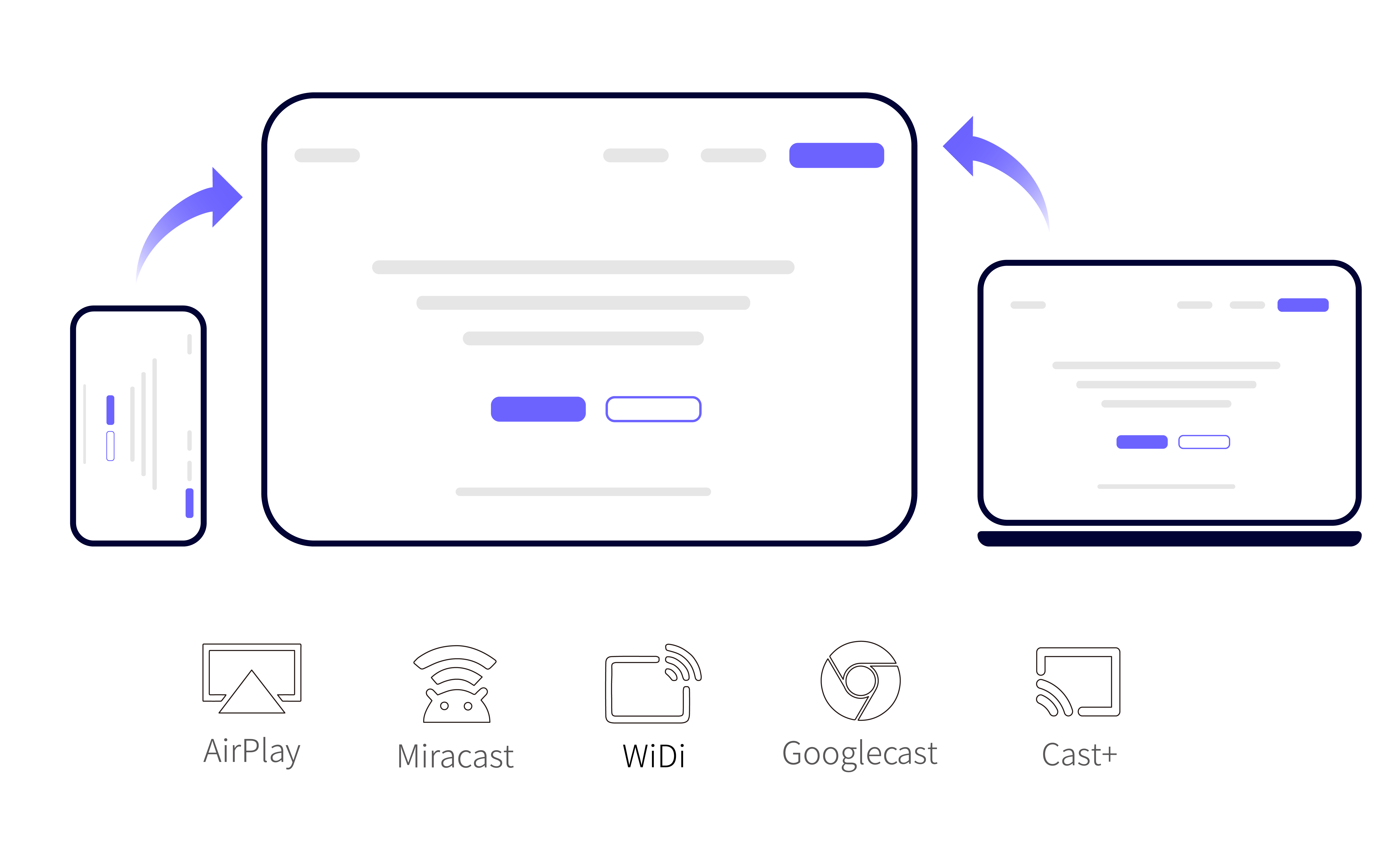Introduction to screen casting method|BJCast
Wireless screen mirroring technology is a technical specification that uses wireless networks to transmit real-time screen images and sound from smart mobile devices to another display device, achieving synchronized content display. The following are introductions to several mainstream screen casting protocols and their screen casting methods:

Miracast protocol
- Technical features: Developed by Wi Fi Alliance, based on WIFI connection, widely supports Android and Windows devices, has strong compatibility, and is the preferred screen mirroring protocol for most Android phones and smart TVs in China.
- Applicable devices: Android 5.0 and above mobile phones, as well as Windows 8/10 system computers.
- Screen casting method:Ensure that the WiFi on the Android phone is turned on.
Slide down the phone, call up the control center, and click the “Phone Screen Projection” or “Screen Projection” button.
Select the device name and successfully cast the screen. - Limitations: Due to the use of UDP protocol for transmission, it is susceptible to environmental interference and may affect the image quality of the receiving end. In addition, different Android devices have different ways to enable Miracast, which increases the difficulty for users to use it.
AirPlay protocol
- Technical features: Developed by Apple Inc., it utilizes Wi Fi to wirelessly transmit audio, video, images, and other content from iOS devices such as iPhone and iPad to AirPlay supported devices such as Apple TV and smart TV. Supports push and mirror modes, renowned for high definition, low latency, and ease of use.
- Screen casting method:Ensure that the Apple phone/Mac computer and device are connected to the same network.
Swipe down on your phone to bring up the control center and click on the “Screen Mirroring” button.
Click on the “Space Play” button in the upper right corner of the computer.
Select the device name and successfully cast the screen. - Restrictions: Require all devices to be within the same local area network and do not support cross network connection.
DLNA protocol
- Technical features: jointly initiated by companies such as Sony, Intel, and Microsoft, aimed at achieving interconnectivity between PCs, mobile devices, and consumer appliances. DLNA only supports push mode and has the advantages of standardization, cross platform compatibility, and easy scalability.
- Applicable scenarios: More suitable for home theater environments rather than corporate settings.
- Advantages: Lossless image quality and high requirements for network environment.
Chromecast protocol
- Technical features: Google’s wireless screen mirroring technology requires a small hardware device to be plugged into the HDMI interface of a TV, connected to a phone or computer via Wi Fi, to achieve screen mirroring of video, music, web pages, and other content. Supports push and mirror modes, with features of intelligence, cloudification, and openness.
- Advantage: The user experience is similar to that of DLNA, but more flexible and intelligent.
WiDi protocol
- Technical features: Wireless screen mirroring technology developed by Intel Corporation allows users to wirelessly transmit computer screen content to display devices that support WiDi via WiFi.
- Advantages: No need to install software, easy to use.
- Limitation: The transmitting device needs to have an HDMI output interface, which limits its applicability.
Example of screen casting method (other protocols)
- Huawei cast+protocol: Ensure that Huawei phone WiFi is turned on, select the device name, and you can complete the screen casting.
- Googlecast protocol: Ensure that the computer and device are connected to the same network. Click the “Deploy…” button, select the device, and complete the screen casting.
- BJCast protocol (requires installation of BJCast): Ensure that the phone/computer and device are connected to the same network, find the device name, and click the screen mirroring button to complete the screen mirroring.
In general, different screen casting protocols have different technical characteristics and application scenarios. Users should consider their own device type, network environment, and specific needs when choosing. Meanwhile, with the continuous development of technology, new screen casting protocols and methods are constantly emerging. Users should pay attention to industry trends in order to timely understand and master the latest screen casting technologies.